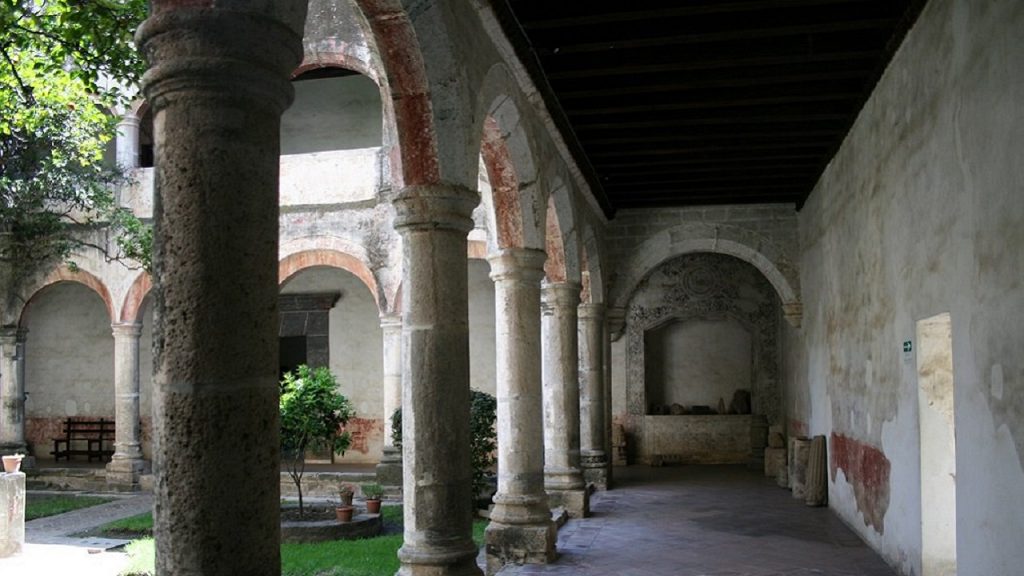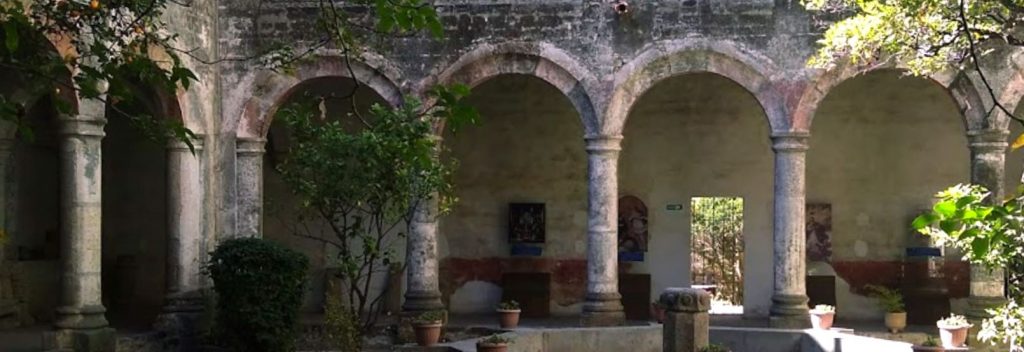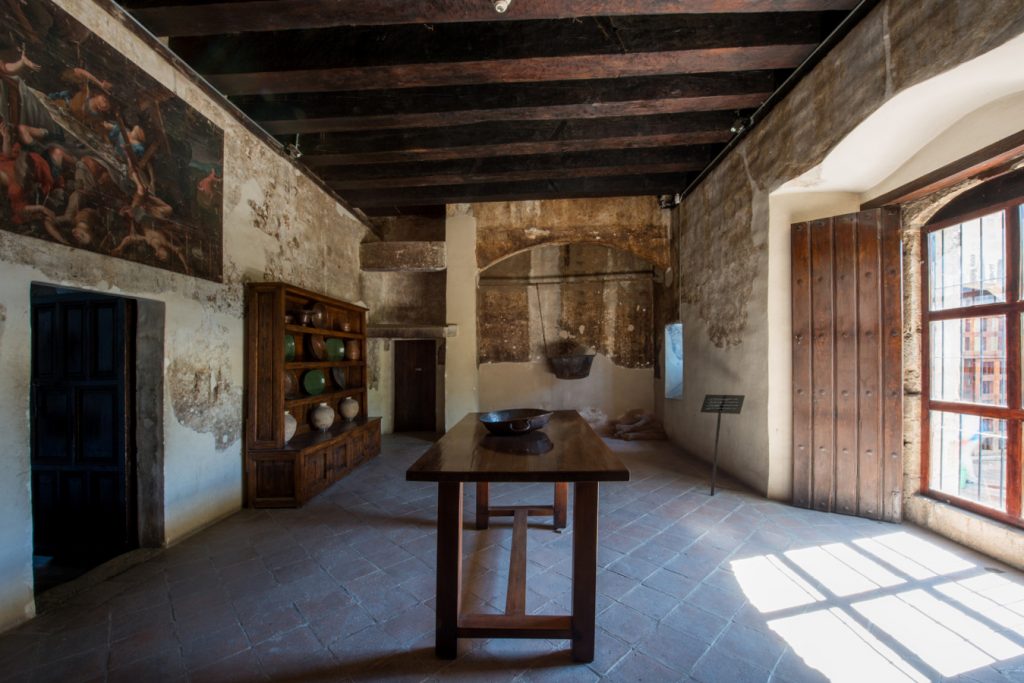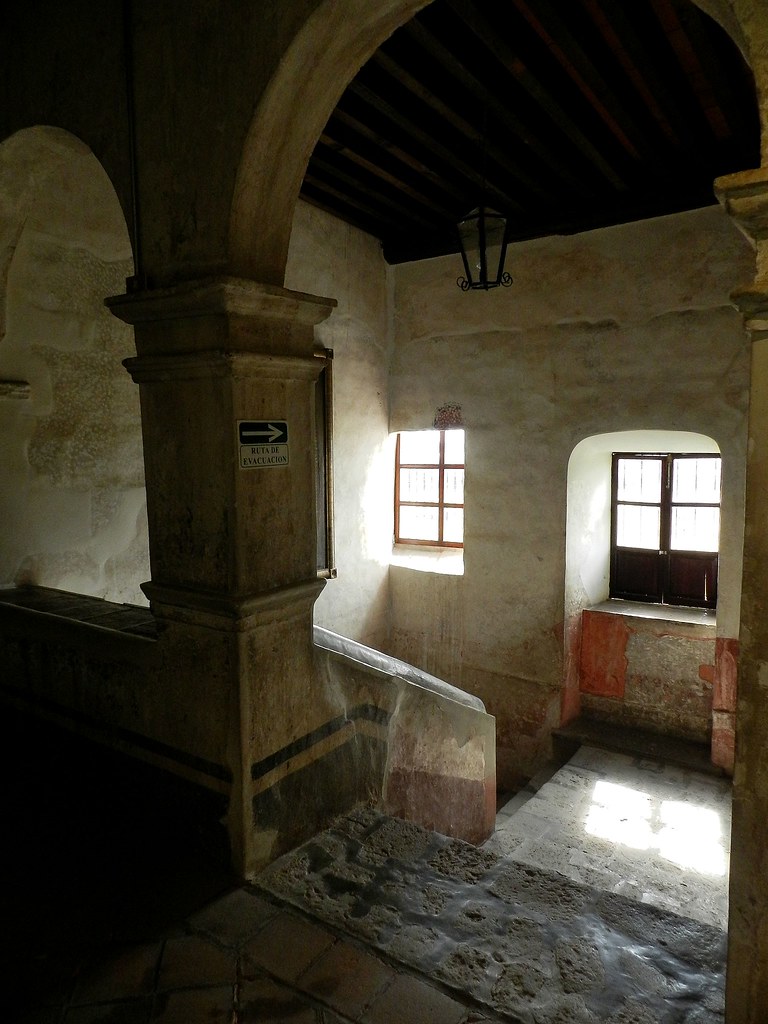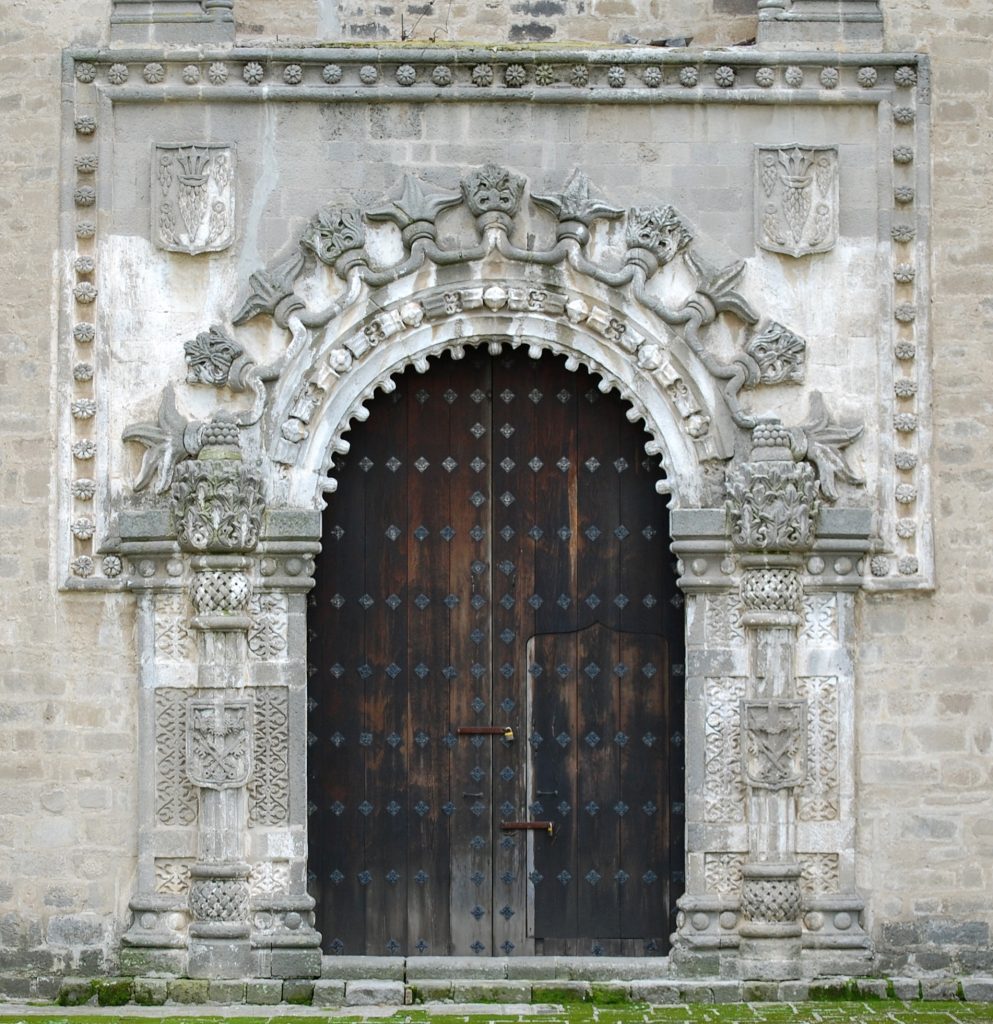Huejotzingo or Huexotzinco is a word composed of the Nahua words ahuéxotl, ahuejote or sabino, the tree; tzin, diminutive, and co, place, which together mean “in the ahuejotito” or “place of the small sabinos”. The name of this town is related to that of Huexotla (“where the ahuejotes”), since Huexotzinco is its diminutive equivalent.
Huejotzingo o Huexotzinco es una palabra compuesta por los vocablos nahuas ahuéxotl, ahuejote o sabino, el árbol; tzin, diminutivo, y co, lugar, que en conjunto significan “en el ahuejotito” o “lugar de los pequeños sabinos”. El nombre de esta población está emparentado con el de Huexotla (“donde los ahuejotes”), ya que Huexotzinco es su equivalente diminutivo.
The valley of Huejotzingo was a corridor and seat of different cultures, it is believed that human groups have inhabited this place for more than 1500 years. When the Olmec influence arrived, agriculture began to develop in the valley. The Olmec-Xicalanca and Toltec-Chichimec ethnic groups, founders of the lordships of Huejotzingo and Cholula, predominated in this region. These groups dominated the area between 600 and 1292. Both peoples arrived at the site following each other, but taking different directions. Once the lordship settled in the valley, it came to occupy and dominate a large territorial extension of the current Puebla-Tlaxcala valley.
El valle de Huejotzingo fue corredor y asiento de diferentes culturas, se cree que grupos humanos han habitado este lugar desde hace más de 1500 años. Al llegar la influencia olmeca, comenzó a desarrollarse la agricultura en el valle. Predominaron en esta región las etnias olmeca-xicalanca y tolteca-chichimeca, fundadoras de los señoríos de Huejotzingo y Cholula. Estos grupos dominaron el área entre los años 600 y 1292. Ambos pueblos llegaron al paraje siguiéndose unos a otros, pero tomando diferentes rumbos. Asentado el señorío en el valle, llegó a ocupar y dominar una gran extensión territorial del actual valle poblano-tlaxcalteca.
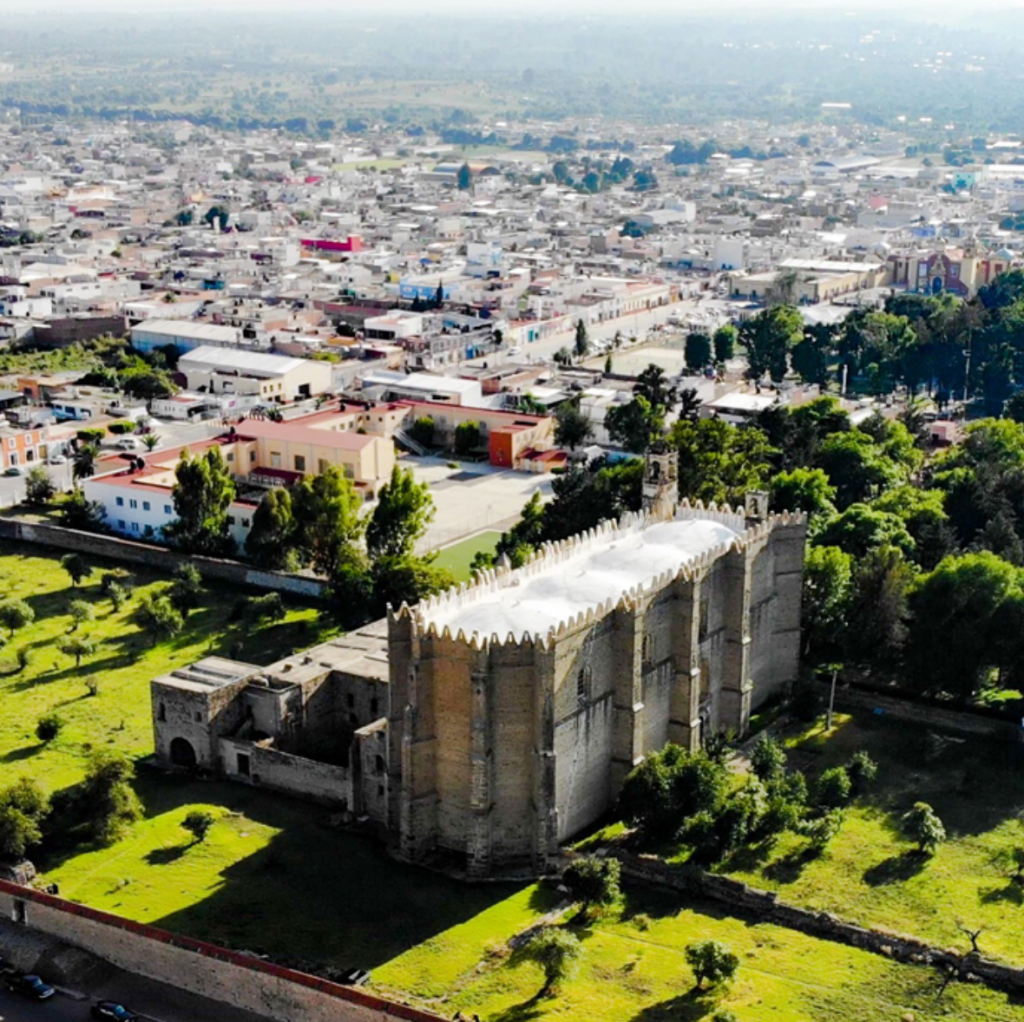
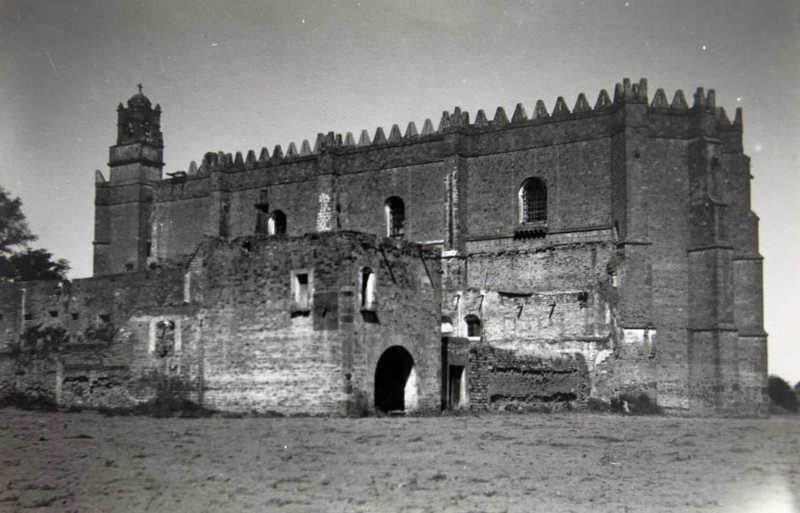
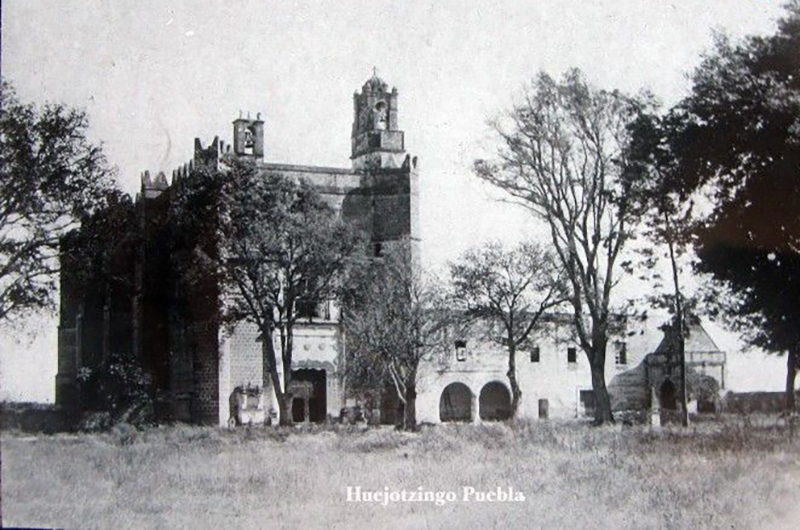
The ceremonial and religious center of the Huexotzincas was located on the slopes of the volcanoes, among the ravines, which they used as a natural fortress to protect themselves from the constant attacks of their neighbors. Although its territorial extension reached beyond the current Atlixco, the lordship was divided into four equally important chiefdoms, very close to each other, perhaps to have greater control over the entire conquered lordship: the main one was Tecpan-Huexotzinco, located in the ravine that divides the current towns of Santa Maria Teopanzolco and San Miguel Tianguizolco, while the others, Xaltepetlapa, Almoyohuacan and Ocotepec, surrounded the mountain range. There were other less important towns such as Chiautzingo, Tzecalacoayan and Teotlaltzingocomol, independent like the previous ones, located to the northwest of the current town.
El centro ceremonial y religioso de los huexotzincas se encontraba a las faldas de los volcanes, entre las barrancas, las cuales usaron como fortaleza natural para protegerse de los constantes ataques de sus vecinos. Aunque su extensión territorial llegaba más allá del actual Atlixco, el señorío se dividió en cuatro cabeceras de igual importancia, muy cerca unas de otras, quizá para tener mayor dominio sobre todo el señorío conquistado: la principal fue Tecpan-Huexotzinco, localizada en la barranca que divide las actuales poblaciones de Santa María Teopanzolco y San Miguel Tianguizolco, mientras que las otras, Xaltepetlapa, Almoyohuacan y Ocotepec, rodeaban la sierra. Existieron otras cabeceras de menor importancia como Chiautzingo, Tzecalacoayan y Teotlaltzingocomol, independientes al igual que las anteriores, localizadas al norponiente de la actual población.
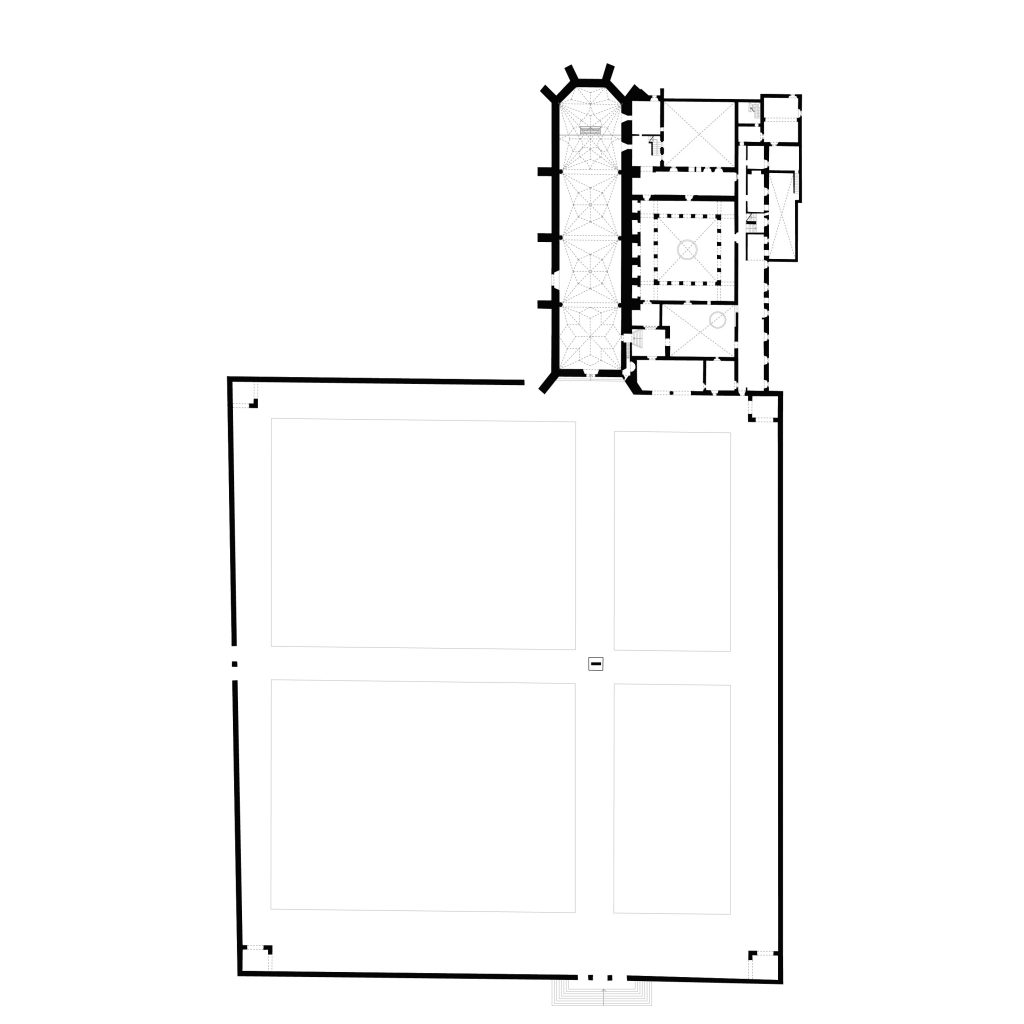
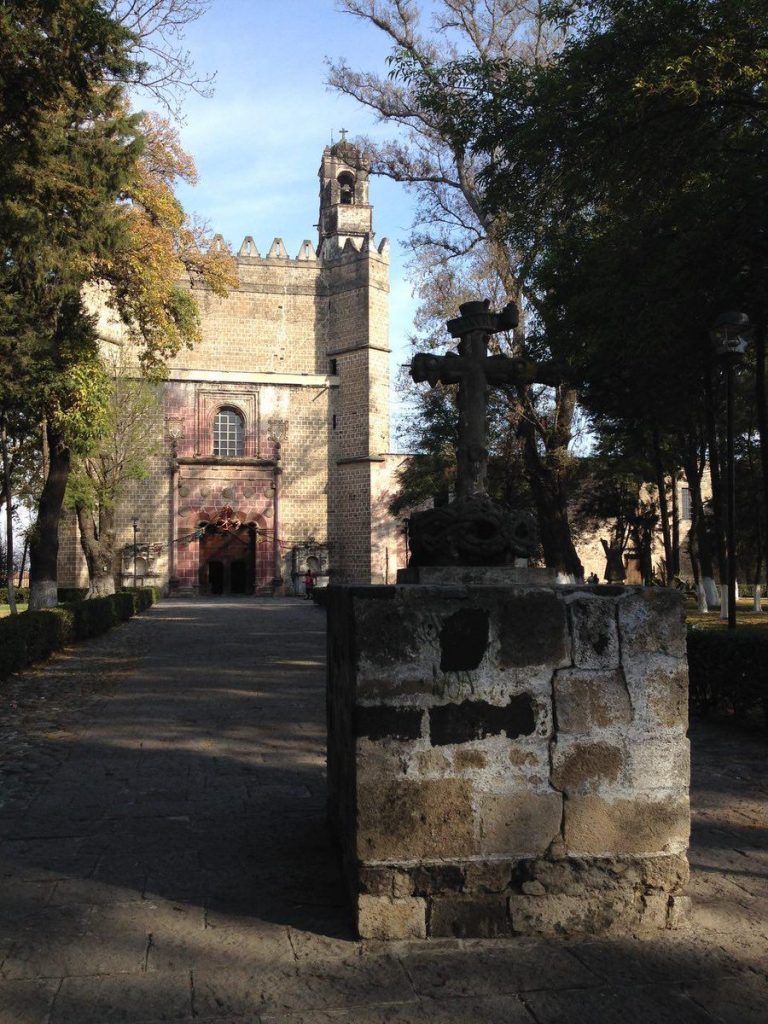
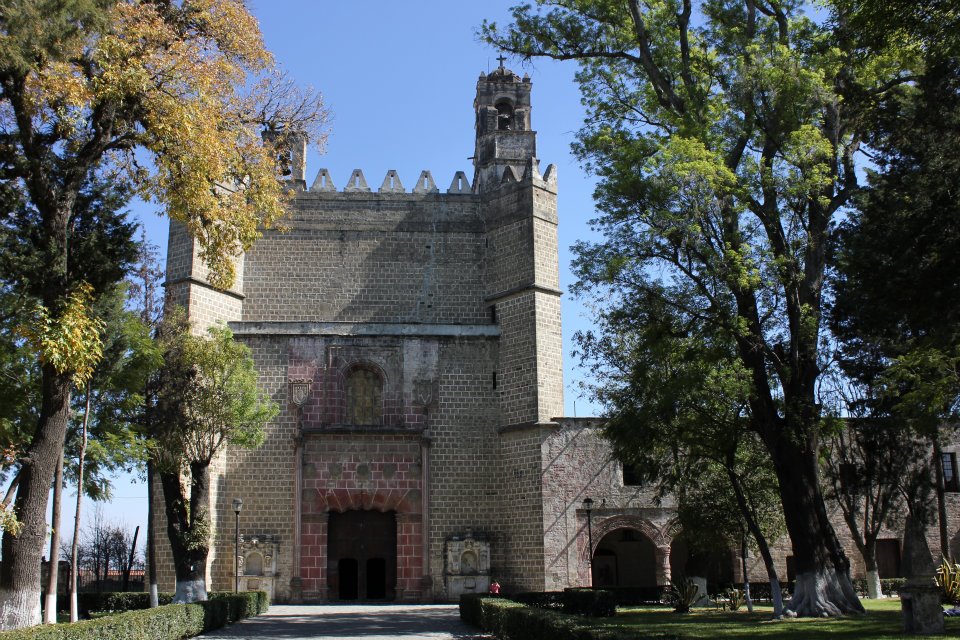
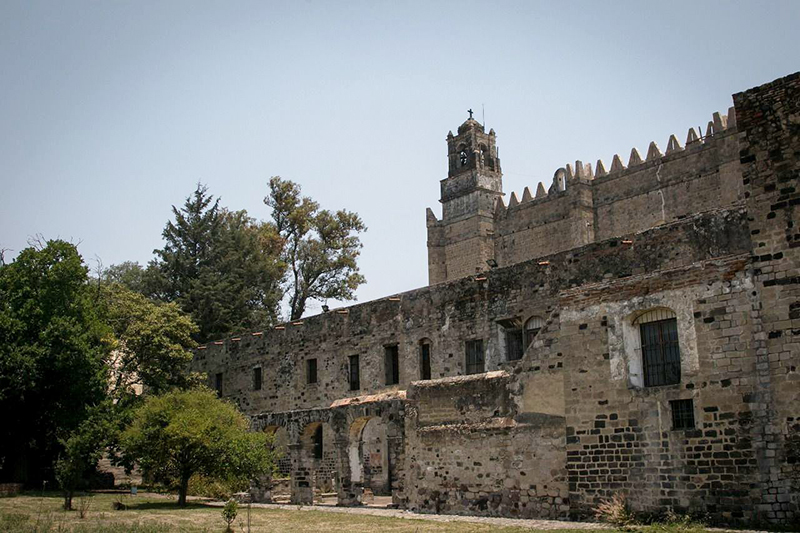
This Franciscan convent, built between 1544 and 1570 by Friar Juan de Alameda, presents a mixture of Plateresque and Mudejar styles. The first style is expressed in the contrast of wide plain spaces with reduced ornamented areas, as is the case of the lateral façade, whose door surrounds a neat decoration that evokes leaves and thistles. The Mudejar style is especially evident in the ogee shape of the arch of the main door (like the inverted keel of a ship seen in the cut: first a cambered arch and then a pointed arch). In the interior the central altarpiece stands out, one of the few of the XVI century that are conserved in Mexico, work of the Flemish artist Simón Pereyns. It also highlights the stone decoration of the door of the sacristy, which forms a mesh studded with flowers. Equally notorious are two Franciscan emblems: the shield of the five wounds of the Lord and the cord topped by bangs. Once in the atrium of the church, it is worth stopping to see the posa chapels (in the corners of the large space, where the processions stopped), built around 1550.
Este convento franciscano, construido entre 1544 y 1570 por fray Juan de Alameda presenta na mezcla de plateresco y mudéjar. El primer estilo se expresa en el contraste de amplios espacios lisos con reducidas áreas ornamentadas, como es el caso de la fachada lateral, cuya puerta rodea una prolija decoración que evoca hojas y cardos. El estilo mudéjar se manifiesta sobre todo en la forma conopial del arco de la puerta mayor (como la quilla invertida de un barco vista al corte: arco combado primero y al final apuntado). En el interior destaca el retablo central, uno de los pocos del siglo XVI que se conservan en México, obra del artista flamenco Simón Pereyns. También resalta el pétreo decorado de la puerta de la sacristía, que forma una malla cuajada de flores. Igualmente notorios son dos emblemas franciscanos: el escudo de las cinco llagas del Señor y el cordón rematado por flecos. Una vez en el atrio de la iglesia conviene detenerse a ver las capillas posa (en las esquinas del gran espacio, donde se iban deteniendo las procesiones), construidas hacia 1550.
Text via Mediateca INAH
